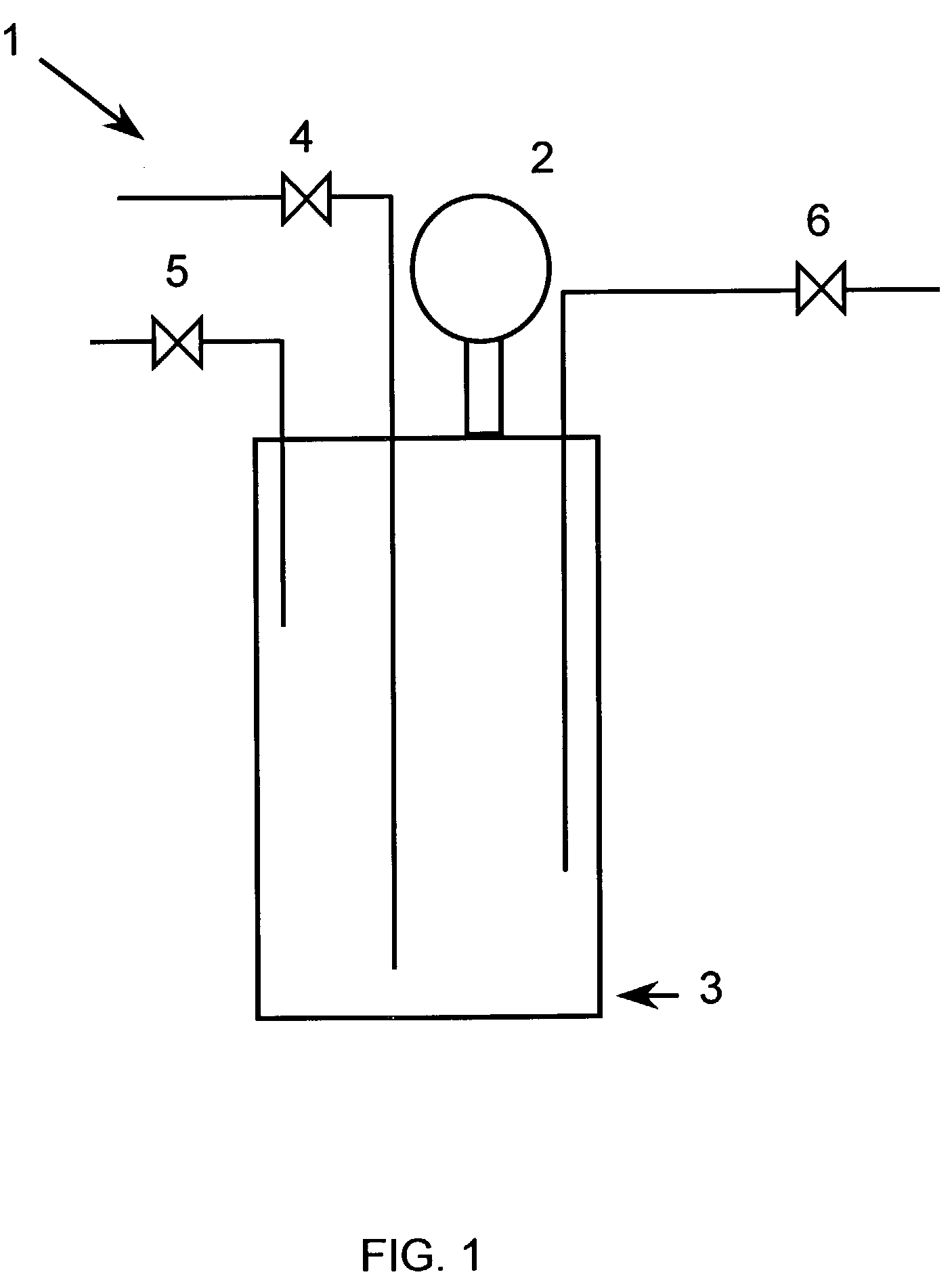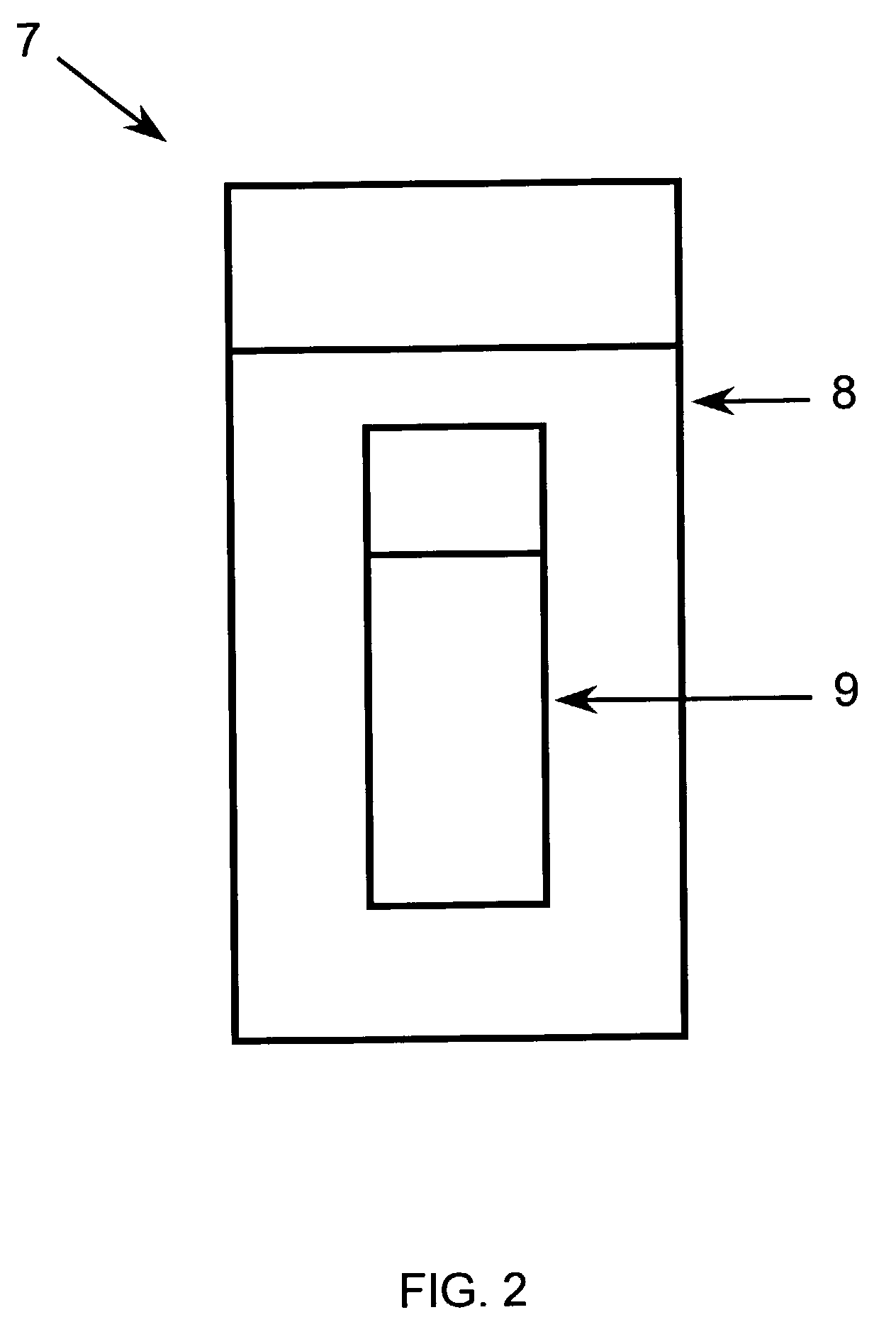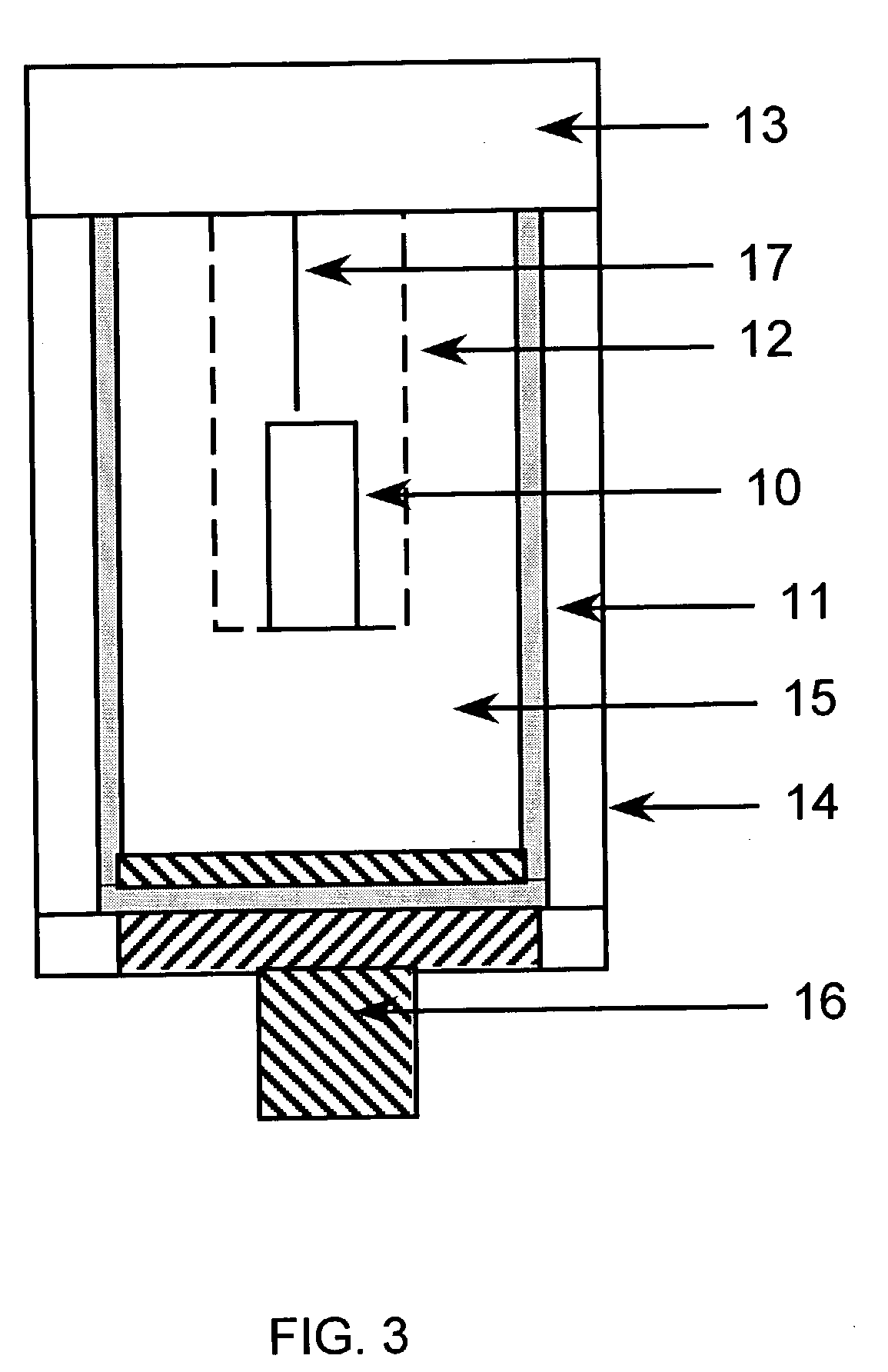Method of using low temperature and high/low pressure processing to preserve food products
- Summary
- Abstract
- Description
- Claims
- Application Information
AI Technical Summary
Benefits of technology
Problems solved by technology
Method used
Image
Examples
example 1
[0047] Generic Escherichia coli or Baker's yeast was grown in Tryptic soy broth and Lactobacillus plantarum ATCC8014 was grown in MRS broth at 35.degree. C. for 24 hours. Either E. coli, Baker's yeast, L. plantarum or Bacillus subtilis spores were diluted in Sorensen's phosphate buffer at pH 7.0 at 2.degree. C.
[0048] An inoculum solution was placed in a stainless steel vessel placed in ice slurry and flushed with oxygen or carbon dioxide at 69 kPa gage (10 psi gage) for 10 min in a gas flushing chamber (FIG. 1). In FIG. 1, the gas flushing chamber 1, includes pressure gage 2, vessel 3, and valves 4, 5, and 6. During the flushing, valve 6 was closed and valves 4 and 5 were opened. Valve 4 was connected to a flow meter which was connected to a gas source. Gas entered through valve 4 and exited through valve 5. Needle bulbs on valves 4 and 5 were used to adjust the flow rate of gas and the pressure inside the vessel 3. During the preparation of pouch samples, valve 4 was closed and val...
example 2
[0052] Three strains of generic Escherichia coli were grown in Tryptic soy broth at 35.degree. C. for 24 hours. Three strains were mixed in equal ratio and were diluted in Sorensen's phosphate buffer at pH 7.0 at 2.degree. C.
[0053] An inoculum solution was placed in a stainless steel vessel placed in an ice slurry and flushed with carbon dioxide at ambient pressure for 10 min (FIG. 1). Gas was allowed to set for 3 min. Once the inoculum was flushed with carbon dioxide, approximately 10 ml of the samples were withdrawn into a pouch made from gas impermeable films (FIG. 2). The pouch was sealed immediately with a heat sealer and placed inside of another pouch. The outer pouch was filled with 10 ml water and heat-sealed (FIG. 2). The headspace was kept minimum during the sealing of pouches. Pouches were stored at 2.degree. C. for overnight prior to the HPP. Pouches of inoculums prior to the gas flushing were also prepared and stored at 2.degree. C.
[0054] The sample pouches were process...
example 3
[0057] Three strains of generic Escherichia coli were grown in Tryptic soy broth at 35.degree. C. for 24 hours. Three strains were mixed in equal ratio and were diluted in Sorensen's phosphate buffer at pH 7.0 at 2.degree. C.
[0058] An inoculum solution was placed in a stainless steel vessel placed in ice slurry and flushed with carbon dioxide, nitrous oxide, argon, nitrogen or helium at ambient pressure for 10 minutes (FIG. 1). Gas was allowed to set for 3 min. Once the inoculum was flushed with the gas, approximately 10 ml of the samples were withdrawn into a pouch made from gas impermeable films (FIG. 2). The pouch was sealed immediately with a heat sealer and placed inside of another pouch. The outer pouch was filled with 10 ml water and heat-sealed (FIG. 2). The headspace was kept to a minimum during the sealing of the pouches. The pouches were stored at 2.degree. C. for overnight prior to the HPP treatment. Pouches of inoculums prior to the gas flushing were also prepared and s...
PUM
 Login to View More
Login to View More Abstract
Description
Claims
Application Information
 Login to View More
Login to View More - R&D
- Intellectual Property
- Life Sciences
- Materials
- Tech Scout
- Unparalleled Data Quality
- Higher Quality Content
- 60% Fewer Hallucinations
Browse by: Latest US Patents, China's latest patents, Technical Efficacy Thesaurus, Application Domain, Technology Topic, Popular Technical Reports.
© 2025 PatSnap. All rights reserved.Legal|Privacy policy|Modern Slavery Act Transparency Statement|Sitemap|About US| Contact US: help@patsnap.com



